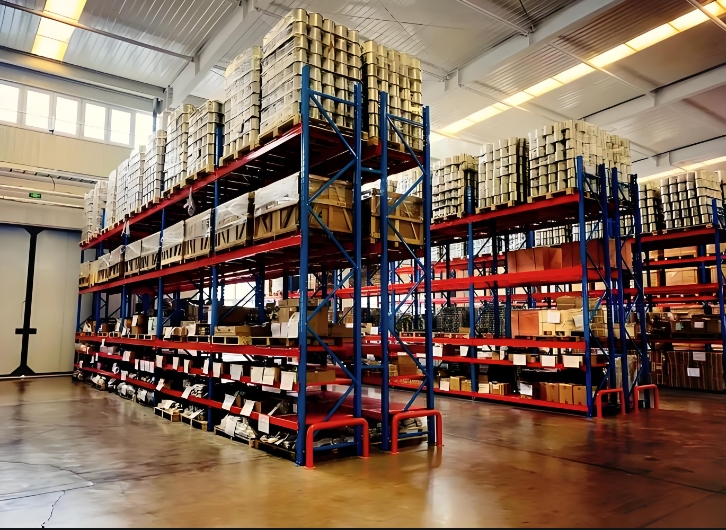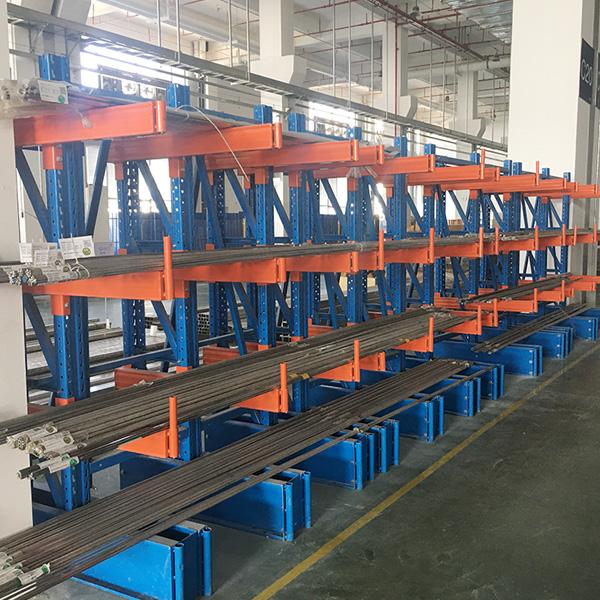In the intricate world of industrial storage and warehouse management, the structural backbone of any efficient operation is its pallet racking system. Among the various configurations available, through type racking stands out as a powerful solution for high-density storage, particularly for businesses dealing with large volumes of similar products. But what exactly is it, and is it the right choice for your facility? This deep dive will explore through type racking from every angle, covering its fundamental principles, key benefits, ideal use cases, and, crucially, the common problems you must anticipate and avoid.

Through type racking is more commonly known in the industry as Drive-In or Drive-Through racking. It is a high-density storage system designed to maximize warehouse cube space by eliminating aisles between rows of racks. Instead of multiple access aisles, this system uses a series of vertical upright frames and rails to create "tunnels" or "lanes" where pallets are stored.
The defining characteristic of through type racking is its configuration:
Drive-In Racking: This design has entries on one end only and a closed back. It operates on a Last-In, First-Out (LIFO) inventory basis. Forklifts drive into the rack structure itself to place and retrieve pallets.
Drive-Through Racking: This design has entries on both ends, allowing for a First-In, First-Out (FIFO) inventory flow. This is ideal for perishable goods or products with expiration dates.
The core idea is density. By significantly reducing the number of aisles, a through type racking system can increase storage capacity by up to 75% compared to traditional selective pallet racking.
A robust through type racking system is not just a random assembly of beams and frames. It's a carefully engineered structure comprised of several critical components:
Upright Frames: These are the vertical structures that form the sides of the storage lanes. They are typically heavier-duty than those used in selective racking to withstand potential impacts from forklifts operating within a confined space.
Guide Rails: Running the length of the tunnel at each storage level, these rails support the pallets. They are designed with a slight incline (usually 3-5 degrees) towards the back to help secure pallets and facilitate drainage if stored outdoors.
Entry Guides: These are crucial for guiding the forklift into the lane accurately, protecting the upright frames from direct impacts.
Structural Bracing: Extensive cross-bracing and horizontal ties provide the necessary structural integrity to the entire system, ensuring it can handle the heavy loads and the dynamic forces of forklift entry and exit.
Anchor Bolts: These secure the entire structure to the concrete floor, preventing any movement or tipping.
The design must account for specific load weights, forklift dimensions, and seismic and building codes to ensure absolute safety.
The decision to implement a through type racking system is driven by several compelling advantages:
Exceptional Space Utilization: This is the primary benefit. By minimizing aisle space, you store more product in the same footprint, reducing your cost per pallet position and maximizing your return on real estate investment.
High-Density Storage: It is the perfect solution for storing large quantities of a limited number of SKUs. Think seasonal items, beverages, canned goods, or raw materials.
Improved Inventory Control (for FIFO/FILO): Depending on the configuration (drive-in or drive-through), it can effectively support specific inventory rotation methods, which is critical for food, pharmaceutical, and chemical industries.
Reduced Material Handling Costs (in specific scenarios): While retrieval times can be slower (see disadvantages), the overall reduction in travel time between widely spaced aisles can lead to efficiency gains for operations with very high volume of a single product.

While powerful, through type racking is not without its significant drawbacks. Awareness of these common problems is essential for risk mitigation.
Reduced Accessibility and Slower Throughput: This is the biggest trade-off. Only one pallet can be accessed at a time. If a needed pallet is buried deep in a LIFO lane, the operator must first remove all the pallets in front of it—a process known as "digging out" or "honeycombing." This drastically slows down order picking and can create bottlenecks during peak times.
High Risk of Product and Rack Damage: Operating a forklift inside a narrow rack structure is a high-skill task. The potential for impacts is immense. A minor steering error can lead to costly damage to the guide rails, upright frames, the stored product, and the forklift itself.
Critical Dependence on Skilled Forklift Operators: Not every forklift operator is qualified to work in a through type racking environment. It requires precision, patience, and excellent spatial awareness. Inadequate training is a primary cause of accidents and damage in these systems.
Inventory Management Complexity: While good for bulk storage, these systems are poorly suited for SKU proliferation. Mixing different products in the same lane can lead to errors, misplacement, and major retrieval issues. It requires disciplined warehouse management system (WMS) tracking.
Structural Integrity and Maintenance Concerns: The constant stress of forklifts entering and exiting, combined with potential impacts, can loosen anchor bolts and weaken connections over time. Regular, thorough inspections are non-negotiable but can be more difficult to perform deep within the lanes.
Safety Considerations: The enclosed nature of the lanes can create a confined space hazard. Proper ventilation and lighting are essential. There is also an increased risk of load collapse if pallets are not placed correctly on the rails or if the system is overloaded.
Mitigating the problems associated with through type racking requires a proactive and disciplined approach:
Invest in Extensive Operator Training: Implement a certified training program specifically for through type racking operations. Include theory and practical, supervised testing in the actual rack environment.
Implement Strict Lane Discipline: Designate specific lanes for specific products or SKUs. Never mix incompatible items in the same lane. Use clear and durable labeling.
Enforce a Robust Inspection Program: Schedule daily visual checks by operators and weekly/monthly formal inspections by a designated safety or maintenance officer. Check for loose bolts, bent beams, cracked welds, and floor anchor integrity.
Utilize Appropriate Equipment: Use forklifts that are the right size and capacity for the lanes. Equip them with specialty features like guided aisle navigation systems, high-visibility cameras, and impact-resistant cages to enhance safety.
Adhere to Load Specifications: Never exceed the specified load capacity per level or per bay. Ensure pallets are in good condition and loads are evenly distributed and secure.
Choosing a through type racking system is a strategic decision. It is an excellent fit if:
You have a high volume of a limited number of SKUs.
Your primary goal is to maximize storage density in a limited space.
Your inventory turnover aligns with LIFO or FIFO principles.
You have skilled forklift operators and a strong safety culture.
It is likely a poor fit if:
You require rapid access to a wide variety of SKUs (high selectivity).
Your operation is focused on fast order picking and fulfillment.
You lack the floor strength to support the intense point loads of the structure.
Operator skill levels are variable or training resources are limited.
Through type racking remains a highly effective and widely used solution for achieving unparalleled storage density. Its ability to transform wasted aisle space into productive pallet positions is its superpower. However, this power comes with significant responsibility. The common problems of reduced accessibility, high damage risk, and operational complexity cannot be ignored. Success with a through type racking system hinges on a commitment to expert design, rigorous training, disciplined operation, and relentless maintenance. By understanding both its immense potential and its inherent challenges, you can make an informed decision on whether this high-density solution will drive efficiency or create bottlenecks in your warehouse.
 Wechat
Wechat
 Whatsapp
Whatsapp